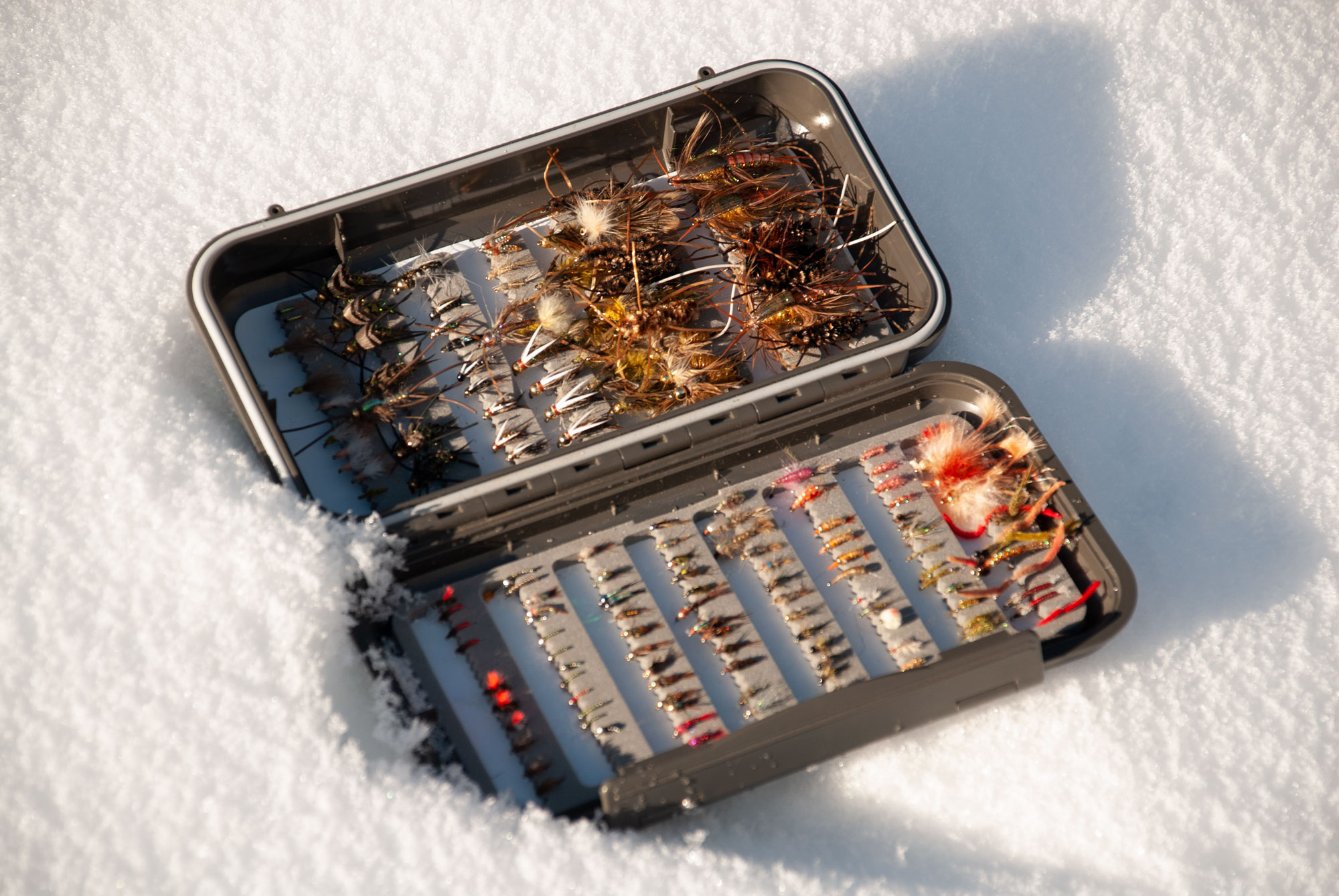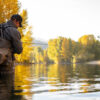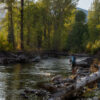“There will be days when the fishing is better than one’s most optimistic forecast, others when it is far worse. Either is a gain over just staying home.”
– Roderick Haig-Brown
A winter angler must accept that which cannot be controlled: the foulness of the weather, the frigidity of the water, the intensity of the hatch. But the angler can be prepared with the right selection of clothes, flies, and tackle. And of course, simply being present is completely in the hands of the angler. What is worse than a cold day on the water? Not going fishing at all.
The Big Wood
With each day a tad longer than the day before, the winter midge hatch continues to gain momentum. And when the hatch is on, the trout will feed voraciously to fatten up for the spring spawn. The warmer than average January has kept the ice from building up allowing anglers to spread out all along the river. If you can find a reasonable pull-out, it is worth walking a little ways away from the easy access runs to find undisturbed fish. Look for classic winter holding water during the afternoon hours and you are sure to find fish feeding on all stages of Winter Midge. If no surface activity can be found, be prepared to fish dry dropper or Euro-style.
Silver Creek
The Nature Conservancy stretch of Silver Creek to Kilpatrick bridge is closed until the last weekend in May; however, the Creek downstream of the Conservancy remains open until the end of March. Despite the cold water, fishing deep and slow with buggers and nymphs can be productive. You may also find some fish feeding on adult midge in the afternoon.
The Big Lost Below Mackay
While a bit of a long drive, the fishing is worth it. The flows are holding steady at 93 CFS. In the afternoon, good numbers of midge are hatching. Some BWO are also in the mix. The water is low and clear, so approach the water with care and use long, light leaders and tippets for the best results.
South Fork of the Boise
Some of the best days on this river are in February and March as the sun hangs a little longer above the rim of the canyon. Seek out deeper runs with ample structure or seams along dancing water and you will find fish looking up. Standard Baetis and adult midge patterns work well. For nymph fishermen, try dry dropper or Euro-style rigs in the seams and tailouts. If this doesn’t get you into some trout, you will certainly be able to find a multitude of whitefish to keep your rod bent.
Big Wood: Griffiths Gnats | Parachute Midge | Bullet French Nymph | Lite Brite Perdigons | Mayhem Midge | Perdichigons | Pat’s Rubber Legs | Bishop’s Dynamite | Zebra Midge in black, red, or olive
Silver Creek: Griffiths Gnats | Parachute Midge | Bullet French Nymph | Zebra Midge in black, red, or olive | Pine Squirrel Leech
Big Lost: High Vis Adams | Griffiths Gnats | Mayhem Midge | Perdichigons | Bullet French Nymph | CDC France Fly | Lite Brite Perdigons | Duracell Jig | Bishop’s Dynamite | Zebra Midge in black, red, or olive
South Fork of the Boise: Gulper Special Olive | High Vis Adams | Mayhem Midge | Perdichigons | Bullet French Nymph | Lite Brite Perdigons | Pat’s Rubber Legs | Bishop’s Dynamite | Zebra Midge in black, red, or olive
| Silver Creek | 96.6 cfs |
| Big Wood | 116 cfs |
| The Big Lost | 90.8 cfs |
| South Fork of the Boise | 299 cfs |
| Salmon River | 1070 cfs |




